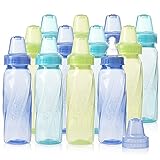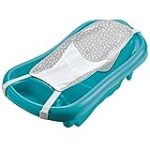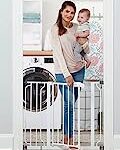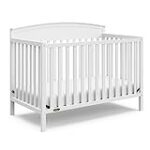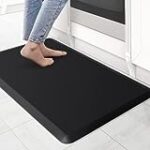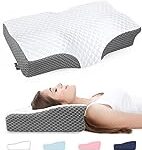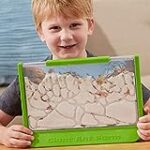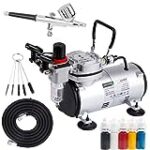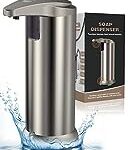🌅 Introduction
Welcome to our comprehensive baby bottles buying guide! As parents, we understand the importance of finding the perfect bottle for your little one. With so many options available, it can be overwhelming to make the right choice. That’s why we’ve done the research for you, compiling a list of the best baby bottles on the market. From anti-colic features to easy cleaning, we’ll help you navigate through the sea of options. So, whether you’re a first-time parent or looking to upgrade your current bottles, trust us to guide you towards the best choice for your baby’s needs.
🏆 Our Top 5
- ANTI-COLIC BABY BOTTLE. Anti-Colic internal vent system is clinically proven to reduce colic. Decreases spit-up, burping and gas.
- CONSISTENT FLOW RATE. Vacuum-free feeding is closest to breastfeeding and Dr. Brown’s silicone nipples provide a consistent flow so babies can feed at their own pace.
- PRESERVES NUTRIENTS. The anti-colic vent system is proven to help preserve bottle milk nutrients and aids in digestion for a better night’s sleep.
- BREASTFEEDING BOTTLE. The breast-like nipple shape encourages a proper latch for a more natural bottle feeding experience and eases the transition from breast to bottle and back again.
- BOTTLE GROWS WITH BABY. Dr. Brown’s Natural Flow Anti-Colic Options+ baby bottle works best with the internal vent system in place but can be removed as baby’s feeding develops – no need to introduce a different bottle.
- Natural baby bottle with Natural Response nipple: Baby controls the pace, just like breastfeeding
- Designed with a unique opening and tip which only releases milk when baby actively drinks; When pausing to swallow and breathe no milk flows from the bottle, just like at the breast
- Our baby bottles make it easy to combine breast and bottle feeding with a wide breast-shaped nipple that has a soft feel that mimics the shape and feel of a breast and baby can control the flow of milk
- No-drip nipple design helps prevent lost milk from the tip of the baby bottle, giving you peace of mind; Bottle Nipple comes in Flow 3
- Anti-colic valve is designed to reduce colic and discomfort by sending air away from your baby's tummy
- PREVENTS NIPPLE COLLAPSE - Evenflo Feeding's Patented Micro Air Vents help prevent nipple collapse, and promote a more comfortable feeding experience for baby.
- EASY TO HOLD - Evenflo Feeding’s classic and iconic shape now has a fun, ergonomic twist! These uniquely shaped Classic baby bottles are incredibly easy to hold while feeding, ensuring both you and your little one are comfortable.
- EASY TO CLEAN - Designed with only 3 pieces, the Classic Baby Bottles can be easily assembled and disassembled for a quick, thorough cleaning between feedings. And because there are only a few parts, there is nothing extra to worry about misplacing. These bottles are also dishwasher safe (top rack only), making your busy life a little easier.
- PUMP DIRECTLY INTO YOUR BABY BOTTLES - Breastfeeding and pumping can be a time consuming task and as a mother you have things to do. Pumping directly into your Classic Baby Bottles is convenient and our bottles will fit onto most standard neck breast pumps.
- BPA FREE - You’re committed to your child’s safety and so is Evenflo Feeding. Their baby bottles are 100% free of BPA, polycarbonates, PVC, and phthalates, and are constructed of food grade materials.
- The original breast-like bottle: Shaped like a breast because babies prefer it that way, our award-winning Closer to Nature baby bottle could just be the best thing for baby, since you!
- Breast-like: Our soft silicone, breast-like nipple feels closer to skin and flexes like mom for a comfortable feed and supports in the transition from breastfeeding to bottle feeding
- Anti-colic: Sensitive Closer to Nature nipple with anti-colic valve reduces excessive air flow, so little ones ingest more milk and less air, preventing symptoms of colic
- A latch made in heaven: 95% of moms say baby accepted our nipple* – the most easily accepted and breast-like nipple, ever, to encourage a natural latch
- Mom recommended: 95% of moms would recommend Tommee Tippee Closer to Nature bottles to others*
- Colorful, lightweight and easy to hold
- Micro air vents help prevent nipple collapse
- Molded measurement markers in both ounces and milliliters
🤔 How to choose?
1. Material: Choosing the Right Baby Bottle Material
When it comes to baby bottles, the material they are made of is an important factor to consider. There are three main types of materials commonly used for baby bottles: glass, plastic, and stainless steel. Each material has its own advantages and disadvantages, so it’s important to choose the one that best suits your needs and preferences.
Glass baby bottles are a popular choice for many parents due to their durability and ability to retain heat. They are also free from harmful chemicals such as BPA, making them a safe option for your little one. However, glass bottles can be heavy and may break if dropped, so extra caution is needed.
Plastic baby bottles are lightweight and shatterproof, making them a convenient option for on-the-go parents. They are also available in a wide range of colors and designs. However, it’s important to choose bottles that are labeled as BPA-free to ensure your baby’s safety.
Stainless steel baby bottles are known for their durability and ability to keep liquids warm or cold for longer periods. They are also free from harmful chemicals and are a great eco-friendly option. However, stainless steel bottles can be more expensive than other materials.
2. Size: Finding the Right Size for Your Baby
Choosing the right size of baby bottle is essential to ensure your little one gets the right amount of milk or formula at each feeding. Baby bottles typically come in different sizes, ranging from 4 ounces to 9 ounces or more.
For newborns, smaller bottles with a capacity of 4 to 5 ounces are recommended. As your baby grows and their feeding needs increase, you can gradually switch to larger bottles. It’s important to consider your baby’s age and appetite when choosing the size of the bottle.
3. Nipple Type: Selecting the Perfect Nipple for Your Baby
The nipple of a baby bottle plays a crucial role in your baby’s feeding experience. There are different types of nipples available, including standard nipples, wide-neck nipples, and anti-colic nipples.
Standard nipples are the most common type and are suitable for most babies. Wide-neck nipples are designed to mimic the shape of a mother’s breast, making them a great option for breastfed babies who are transitioning to bottle feeding. Anti-colic nipples have special vents or valves that help reduce the amount of air your baby ingests during feeding, minimizing the risk of colic and gas.
4. Cleaning and Maintenance: Easy-to-Clean Baby Bottles
Keeping your baby’s bottles clean is essential for their health and well-being. Look for baby bottles that are easy to disassemble and clean. Bottles with wide openings are easier to clean and allow for thorough scrubbing. Some bottles are also dishwasher-safe, which can save you time and effort.
It’s important to regularly inspect the bottles for any signs of wear and tear, such as cracks or discoloration. Replace any damaged bottles to ensure your baby’s safety.
5. Cost: Finding Affordable Baby Bottles
While cost should not be the sole determining factor when choosing baby bottles, it’s still an important consideration for many parents. Baby bottles can vary in price depending on the brand, material, and features.
Consider your budget and choose baby bottles that offer good value for money. Keep in mind that investing in high-quality bottles may save you money in the long run, as they are more durable and less likely to need frequent replacement.
Remember, every baby is unique, and what works for one may not work for another. It’s important to consider your baby’s individual needs and preferences when choosing baby bottles. By taking into account the material, size, nipple type, cleaning and maintenance, and cost, you can find the perfect baby bottles that will make feeding time a breeze for both you and your little one.
💡 What to Look for in a baby bottles?
1. Material: Choosing the Right Baby Bottle Material
When it comes to baby bottles, the material they are made of is an important factor to consider. There are several options available, each with its own set of advantages and disadvantages. Here are some popular materials to look for:
– Glass: Glass baby bottles are a classic choice, known for their durability and ease of cleaning. They are also free from harmful chemicals such as BPA and phthalates, making them a safe option for your little one. However, glass bottles can be heavy and may break if dropped.
– Plastic: Plastic baby bottles are lightweight and shatterproof, making them a convenient choice for on-the-go parents. Look for bottles that are labeled as BPA-free to ensure they are safe for your baby. However, some parents may have concerns about the potential leaching of chemicals from plastic bottles.
– Stainless Steel: Stainless steel baby bottles are a newer option on the market. They are durable, lightweight, and free from harmful chemicals. They also have excellent heat retention properties, keeping liquids warm or cold for longer periods. However, stainless steel bottles can be more expensive than other materials.
2. Nipple Design: Finding the Perfect Nipple
The nipple design of a baby bottle is crucial for your baby’s feeding comfort. Here are some factors to consider when evaluating nipple options:
– Shape: Look for nipples that mimic the shape and feel of a mother’s breast. This can help with the transition between breastfeeding and bottle feeding. A wide base and a soft, flexible nipple can provide a more natural feeding experience for your baby.
– Flow: Nipples come in different flow rates, ranging from slow to fast. Newborns typically require a slower flow to prevent choking or overfeeding. As your baby grows, you may need to switch to a faster flow nipple to accommodate their feeding needs.
– Material: Nipples can be made of silicone or latex. Silicone nipples are more durable and easier to clean, while latex nipples are softer and more flexible. Consider your baby’s preference and any potential allergies when choosing the material.
3. Ease of Cleaning: Keeping it Clean and Hygienic
Keeping your baby’s bottles clean and hygienic is essential for their health and well-being. Look for bottles that are easy to clean and maintain. Consider the following features:
– Wide openings: Bottles with wide openings are easier to clean and allow for thorough scrubbing. They also make it easier to pour formula or breast milk into the bottle without spills.
– Dishwasher safe: If you prefer to use a dishwasher for cleaning, make sure the bottles are labeled as dishwasher safe. This can save you time and effort in the long run.
– Fewer parts: Bottles with fewer parts are generally easier to clean and assemble. Look for bottles that have a simple design and minimal components.
In conclusion, when choosing baby bottles, consider the material, nipple design, and ease of cleaning. Finding the right bottle can make feeding time more comfortable for your baby and more convenient for you. Remember to prioritize your baby’s safety and comfort when making your selection.
🔍 How we picked?
1. Importance of Choosing the Right Baby Bottle
Choosing the right baby bottle is crucial for both the comfort and health of your little one. With so many options available on the market, it can be overwhelming to make a decision. However, taking the time to research and understand the different features and benefits of each bottle will help you make an informed choice.
2. Considerations When Choosing a Baby Bottle
When selecting a baby bottle, there are several factors to consider. First and foremost, you want to ensure that the bottle is made of safe and non-toxic materials. Look for bottles that are BPA-free and made from high-quality materials such as glass or food-grade silicone.
Another important consideration is the nipple shape and flow. Babies have different preferences when it comes to nipple shapes, so it’s essential to find one that your baby is comfortable with. Some babies prefer a wide nipple, while others prefer a narrow one. Additionally, the flow rate of the nipple should match your baby’s age and feeding abilities.
Lastly, ease of cleaning and assembly is an important factor to consider. Look for bottles that are easy to take apart and clean thoroughly to ensure proper hygiene. Bottles with wide necks and minimal parts are often easier to clean and assemble.
3. Our Selection Process
At [Company Name], we understand the importance of choosing the right baby bottle for your little one. That’s why we have carefully curated a selection of top-rated bottles that meet our strict criteria.
Our team of experts extensively researched and tested various baby bottles on the market, considering factors such as safety, nipple design, ease of cleaning, and overall customer satisfaction. We also took into account feedback and reviews from parents who have used these bottles with their own babies.
We believe that our selection offers the best options for parents who are looking for high-quality, safe, and reliable baby bottles. Whether you prefer glass bottles for their durability and eco-friendliness or silicone bottles for their lightweight and flexibility, we have options to suit every preference.
In conclusion, choosing the right baby bottle is essential for your baby’s comfort and well-being. By considering factors such as material safety, nipple design, and ease of cleaning, you can make an informed decision. Our carefully curated selection of baby bottles offers the best options on the market, ensuring that you can find the perfect bottle for your little one.
💬 Frequently asked questions about baby bottles
1. What are the different types of baby bottles available?
There are several types of baby bottles available on the market today, each with its own unique features and benefits. The most common types include standard bottles, wide-neck bottles, angled bottles, and anti-colic bottles. Standard bottles are the traditional choice and are widely available. Wide-neck bottles are designed to mimic the shape of a mother’s breast, making it easier for babies to latch on. Angled bottles have a unique shape that helps reduce the amount of air swallowed during feeding, which can help prevent colic. Anti-colic bottles are specifically designed to reduce the amount of air bubbles in the milk, helping to prevent gas and discomfort for your little one.
2. What materials are baby bottles made of?
Baby bottles are typically made from three main materials: glass, plastic, and stainless steel. Glass bottles are a popular choice for parents who prefer a more eco-friendly option, as they are reusable and easy to clean. Plastic bottles are lightweight and durable, making them a convenient choice for on-the-go parents. Stainless steel bottles are known for their durability and ability to keep liquids warm or cold for longer periods of time.
3. How do I choose the right size bottle for my baby?
Choosing the right size bottle for your baby is important to ensure they are getting the right amount of milk during each feeding. The size of the bottle you choose will depend on your baby’s age and feeding habits. Newborns typically start with smaller bottles, around 4 to 5 ounces, and gradually move up to larger sizes as they grow. It’s important to note that babies have different appetites, so it’s always a good idea to have a variety of bottle sizes on hand to accommodate their changing needs.
4. Are there any special features I should look for in a baby bottle?
When choosing a baby bottle, there are a few special features you may want to consider. Look for bottles with easy-to-read measurement markings, as this will make it easier for you to measure and track your baby’s intake. Some bottles also come with venting systems or anti-colic features, which can help reduce gas and fussiness. Additionally, bottles with wide necks or wide openings are generally easier to clean and assemble.
5. How often should I replace my baby bottles?
It’s important to regularly inspect your baby bottles for signs of wear and tear, such as cracks or discoloration. If you notice any damage, it’s best to replace the bottle immediately to ensure your baby’s safety. Additionally, it’s a good idea to replace your baby bottles every 3 to 6 months, as regular use can cause wear and tear over time.
Last update on 2024-07-26 / Affiliate links / Images from Amazon Product Advertising API
